In fact, the rapid growth of SALES in Russia stopped at the end of 2014, but the companies “by inertia” tried to spur this lame horse until it felt completely ill in the era of COVID-19. And now it’s already clear that nothing has ended, there is no global decrease in the pandemic dynamics, a second wave begins in a number of regions and it becomes more and more obvious that there will be no quick V-shaped bounce of the economy. And there will be a long process of relief and adaptation to new realities.
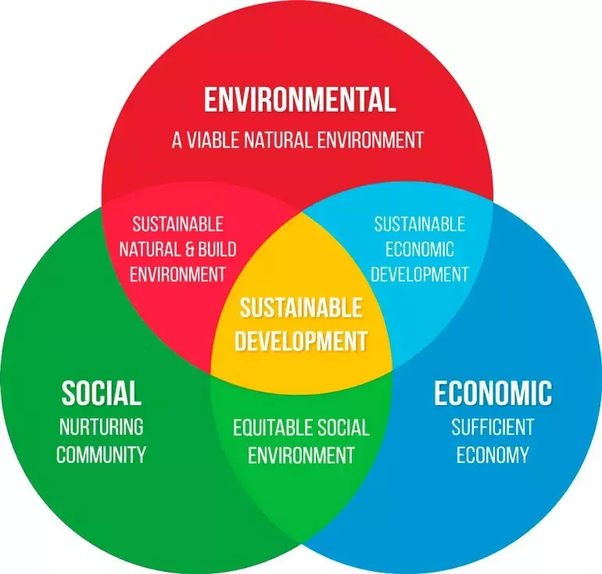
And it was precisely today that the subject of Sustainable Development became acute. For many, this term evokes the first associations with Corporate Social Responsibility (CSR) or Environmental Responsibility. But I believe that the basis for the existence of the Sustainable Development Model is the Long-Term Effective Economic Model. Without it, everything else are impossible and a commercial enterprise - these are not eco-activists and philanthropists in the first place. It is thanks to the economic foundation that social and environmental initiatives are being implemented, mutually reinforcing. During the crisis, the economic model is subjected to main pressure, and its health determines the state of affairs in other areas. The challenge is to strengthen and diversify the economic model. The success of a company cannot depend on only one factor (for example, sales). The world has already understood this for a long time and for the last 10-20 years they have been actively investing in the development of another strategic direction of the company - these are PROCUREMENT. NOT SUPPLY, namely PROCUREMENT.
Despite the enormous contribution to the creation of added value, which can bring competent cost management, the reality is that in many sectors, procurement is still mainly a service function with limited mandate. Today, often unprepared buyers lose to trained sellers. A function that, in light of the unprecedented pace of change in the modern world, can actually open up distinctive competitive advantages to its enterprises, is currently of minimal recognition. In this article, I want to show the WAY that Procurement can go through to turn from a service function into a structure that determines the sustainable development of the company.
So, what forms of Procurement organization exist:
PROCUREMENT 1.0 SUPPLY:
- this is a model of a purely service function;
- all work is reduced to processing requests for purchasing from internal clients to ensure deliveries on time and in full (OTIF like a main KPI);
- with this organization, procurement can make a minimal contribution to lowering costs, since the only lever to manage savings is to reduce price and discuss financial conditions.
This form of organization, unfortunately, is the most common in the post-Soviet space due to historical reasons (see video).
PROCUREMENT 2.0 COST-KILLERS:
- at this organization, Procurement is proactive. They themselves take initiatives and identify priorities and opportunities in order to achieve the maximum effect in reducing costs;
- and they have extended mandate, including the management of business needs, for example, they have a significant voice in the formation of technical specifications;
- procurement savings are regularly measured, recognized by finance professionals and management;
- Procurement builds its objectives together with the objectives of other departments, and they are taken into account in the general budget;
- teams are motivated by the result.
The procurement process in this scheme is fundamentally different from Procurement 1.0. It does not begin with a Request for Purchase, but with the joint planning of Procurement Projects and Cost / Needs Analytics. And only at this stage is it possible to achieve savings of 3-15% of total costs. The supply cycle itself with this scheme is only reduced.
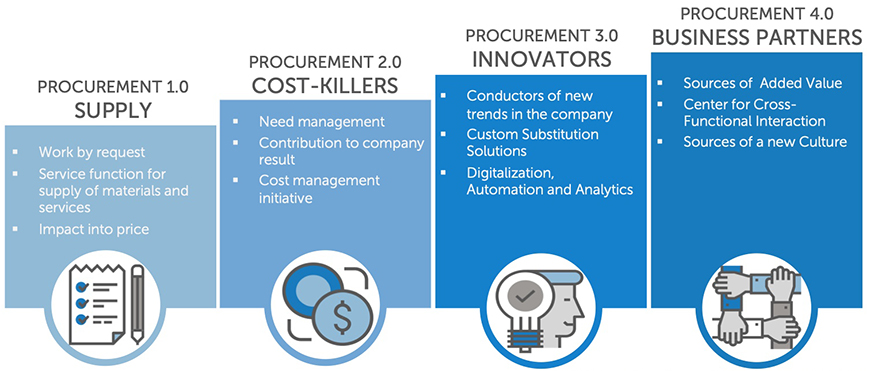
PROCUREMENT 3.0 INNOVATORS:
- bring new ideas from suppliers right up to the organization of joint R&D process. New technologies and inventions open up serious competitive advantages;
- give a broad answer to an existing business need. Today, more and more often, the purchase is replaced by the acquisition of the Service (the concept of "Anything as a Service"). There is an example when a company provides Batteries for network UPS and fleets as a Service, while only the costs are reduced by 40%, not to mention the administration and guarantee of environmental responsibility;
- introducing Internet of Things (IoT) solutions that lower Total Cost of Ownership (TCO). There is an example when installing an access and monitoring system on forklift trucks resulted in a 30% reduction in the total cost of repairs;
- and this is definitely Digitalization, and not only traditional tools for the procurement cycle (such as P2P, e-Sourcing and ECM), but also the use of modern analytics tools that reveal the full potential of cost reduction.
The key conditions for the transition to this scheme are competencies of the team and openness to cooperation, and teamwork as a source of new ideas and added value.
PROCUREMENT 4.0 BUSINESS PARTNERS:
- this is a guarantee of the sustainable competitive advantage that Procurement can bring;
- this is forecasting and the impact on production / sales, taking into account macroeconomic trends. For example, the Indirect Procurement of one large international industrial company developed a risk forecast taking into account COVID-19 and ahead of schedule began to introduce anti-crisis procurement plans taking into account falling demand and the stability of the economic model;
- these are the possibilities of new technologies and the acceleration of the introduction of innovative models;
- Procurement is credible and participates in wide cooperation with strategic divisions;
- Create flexible, business-oriented cross-functional groups within and outside the enterprise;
- and contribute to creating a unique brand image through social and environmental responsibility.
Each subsequent model includes all the advantages of the previous ones. Evaluate what type of organization your Procurement are and set realistic transformation goals.
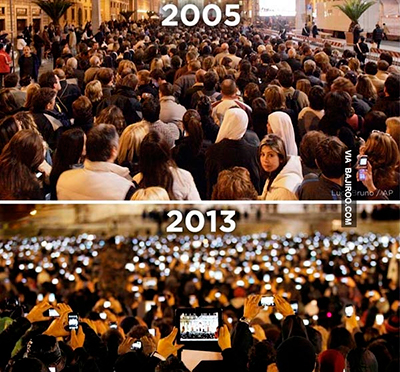
Today in the developed economies of the world 60% of new businesses close in the first 3 years. And one of the reasons is the change in the external context. You have a great business idea, it is relevant, there is demand, there is a plan, financing, and you begin to bring the product to the market. But when a product appears in 1-2 years, it turns out that the context has already changed: competitors released a similar product earlier and saturated the market, new technology appeared, customer behavior changed ... But since you did not follow these changes and they were not in your models, then resources run out and your business is on the sidelines. The way the world changes is perfectly demonstrated by photographs from the Vatican. And this is only in 8 years! Change today is a vital necessity, and in fact we are entering a world in which permanent transformation becomes a condition for survival.
For the transformation of the business and, in particular, the procurement to be successful, the approach to this process must be comprehensive. The strategic transformation plan should address four areas:
CULTURE
Perhaps cultural changes are the most complex, but everything should start with them. These changes should have an ideological sponsor, but not a boss with "a whip", this is a Person who can inspire and explain the essence of the changes to people. The team leading the change must be motivated and proactive.
ORGANIZATION
When transforming Procurement models, a radical review of the mandates of actors is required, and people should want and be able to assume these mandates and responsibilities. Processes are being reviewed (some very dramatically) as well as key performance indicators. For example, there are clear goals for procurement savings.
TOOLS
Today it is no longer possible to consider the organization of Procurement processes without using a wide range of IT tools. The first tools appeared 25 years ago, and during this time there was an explosive evolution. Today, the dominant concept in IT solutions is the transition from Platform solutions (for example, a set of modules based on SAP, Oracle or 1C) to the Ecosystem. A single platform can no longer solve specific problems or is not a leader in them. For example, the tasks of Spend Analytics, Tracking Procurement Savings are solved in special tools. Most solutions become cloudy. And there are innovative opportunities for working with big data on the basis of Machine Learning and Artificial Intelligence in Procurement. The concept “Data is a new oil” is embodied - turning procurement data into money. However, the implementation of IT tools should not be spontaneous and should be integrated into the overall transformation plan, the specifics of your processes should be reflected in the business requirements for the product.
MATURITY
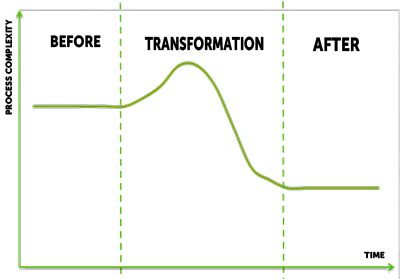
Changes require the growth of competencies of the team and people with new competencies (for example, procurement analysts). The process itself requires becoming. At the peak of the changes, the complexity increases and it may seem that the changes do not lead to improvements. This is partly due to the process of adoption of changes (therefore, cultural preparation is so important), and partly due to the fact that at first there is no automatism and habits, there are mistakes, their correction and the development of new skills. But when the process stabilizes, then the improvements become apparent. Starting the process of transformation, it is necessary to prepare teams for a period of turbulence, the complexity of going through a period of change depends on this preparation.
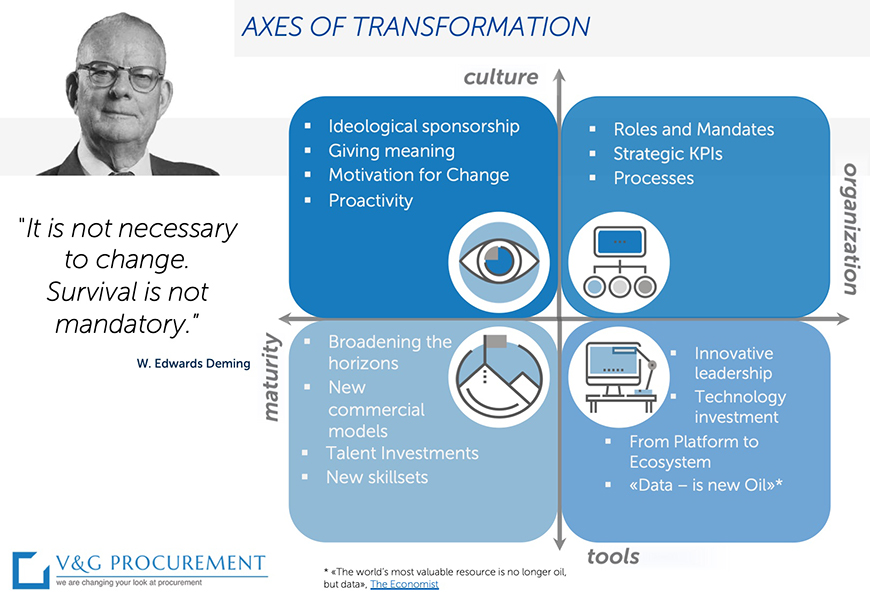
For such a process of procurement transformation to be successful, you need a professional guide. V&G Procurement is a team of professional practitioners. We created the functions of Procurement from scratch and carried out transformations both on the local (Russian market) and within the framework of global enterprises. Our uniqueness is the author's symbiosis of the profession of procurement and enterprise performance management. Our global technology partners represent Procurement Solutions at the peak of innovation. Our mission is “Changing your look at procurement and management of business expenses to guarantee its effectiveness and sustainable competitive advantage in the market.".
